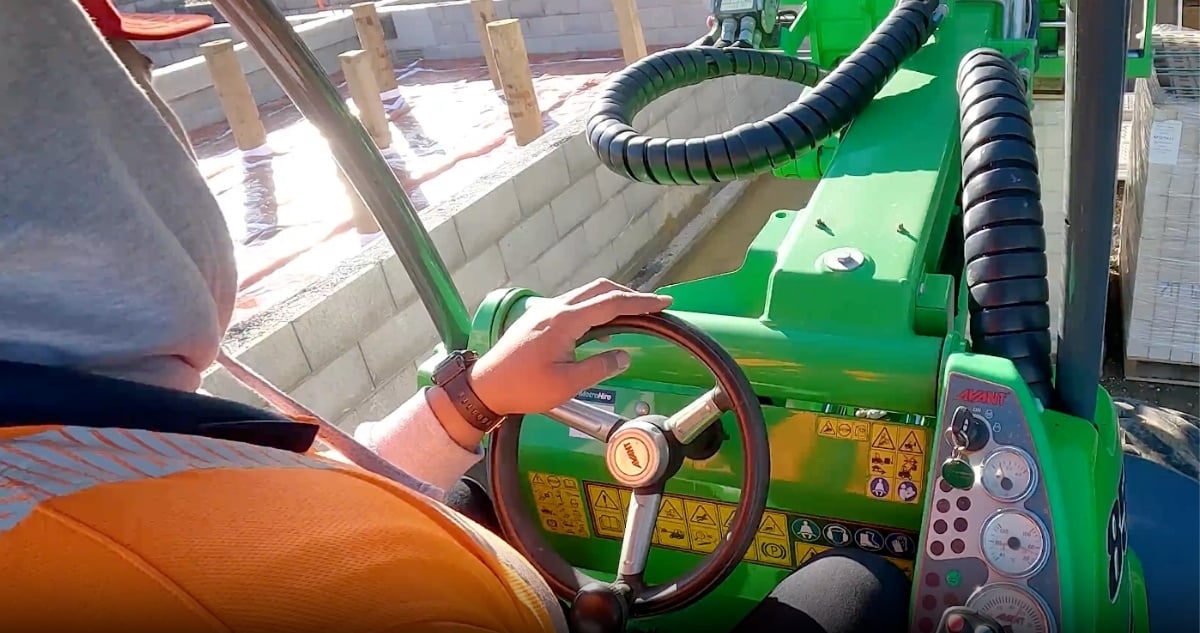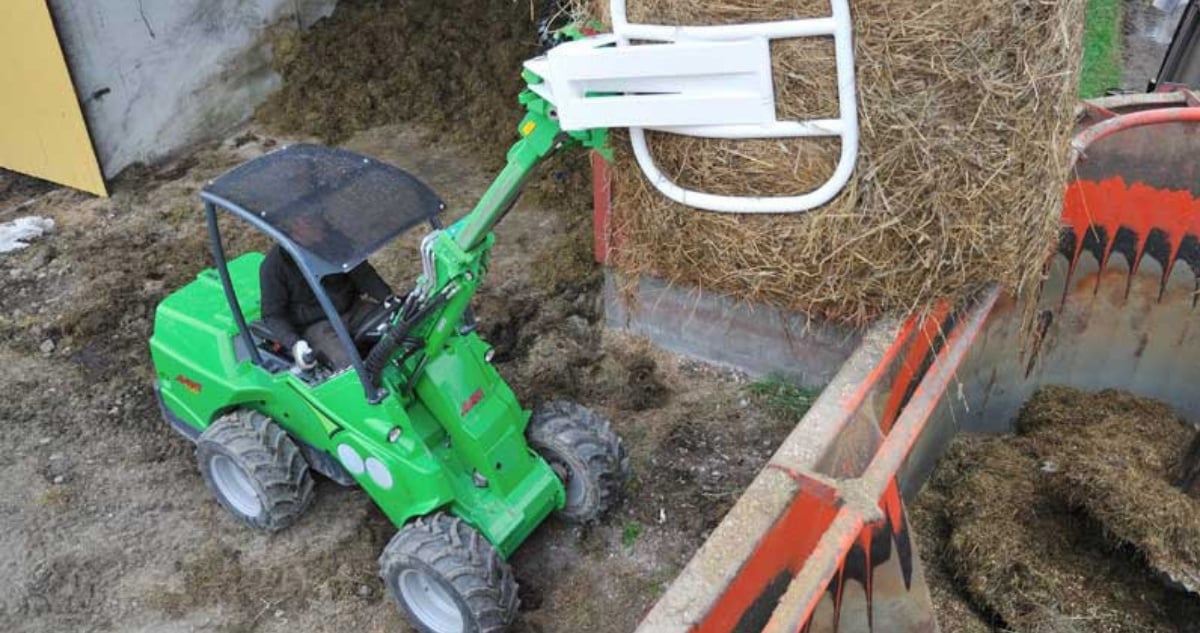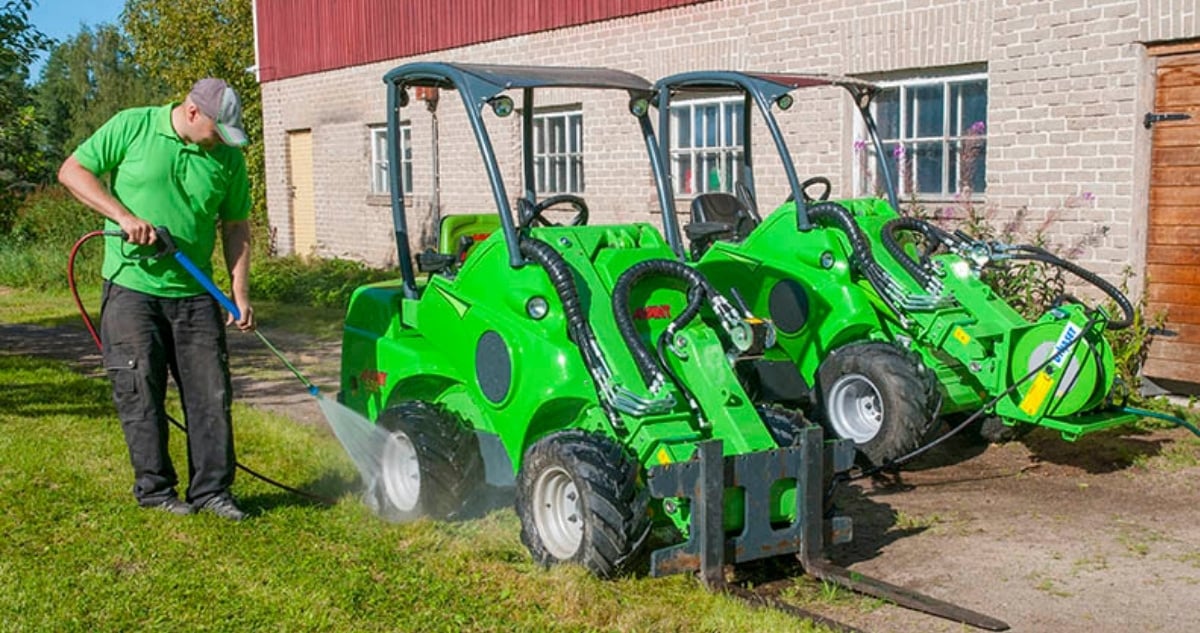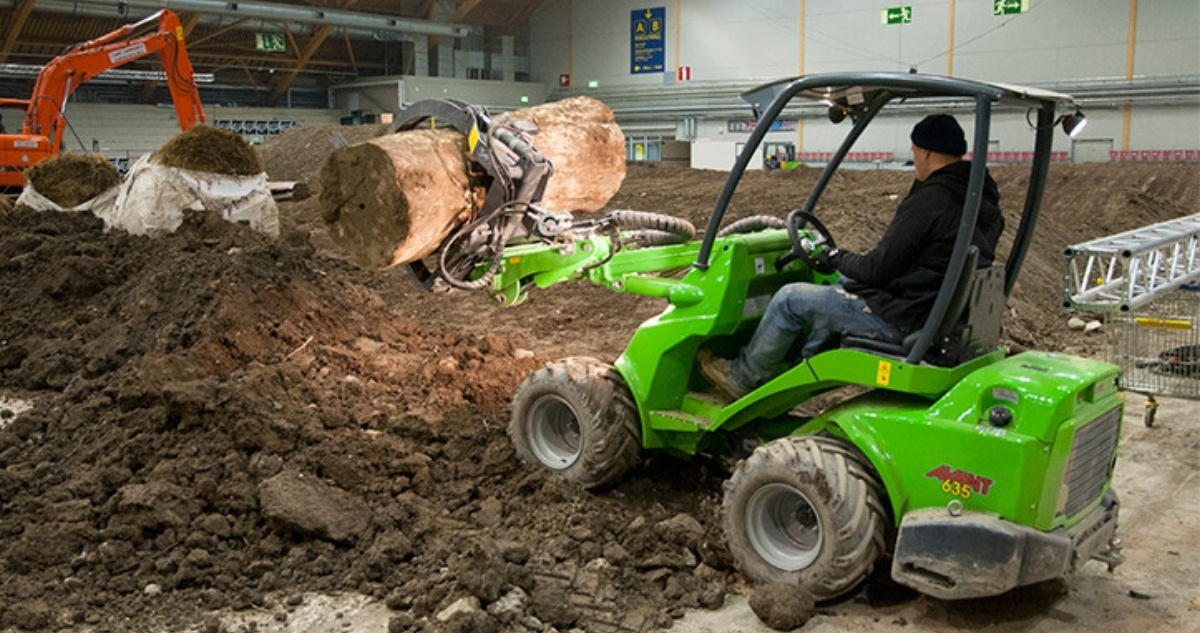After reading about different loader types, many contractors find themselves with a specific question: should they choose tracks or wheels for their next machine? Both options have distinct advantages, and the right choice depends entirely on how and where you'll use the loader.
This decision impacts everything from daily operating costs to which jobs you can take on. Understanding the practical differences between tracked and wheeled loaders will help you make the choice that actually fits your operation.
Why steering method matters more than you think
The fundamental difference worth exploring is how these machines actually turn. Traditional skid steers and compact track loaders steer by varying the speed of wheels or tracks on each side, creating that characteristic sliding motion. This sliding action provides the tightest possible turning radius but comes with specific trade-offs.
Avant wheel loaders use a completely different approach with articulated steering. The machine has a rigid articulation joint in the middle, and the rear tyres follow precisely in the path of the front tyres during turns. This creates a larger turning circle but eliminates the surface damage associated with skidding motions.
Understanding this difference helps predict how each machine will perform in your specific working conditions. If you regularly work on delicate surfaces, completed landscapes, or areas where surface preservation matters, the steering method becomes a primary decision factor.

When zero-turn capability excels (and when it doesn't)
Traditional tracked and skid steer loaders offer zero-turn capability that becomes crucial in specific situations. Working in particularly narrow spaces, such as between a house and a fence, requires this manoeuvrability, as does navigating around multiple obstacles in cluttered work areas.
However, this zero-turn advantage comes with increased surface wear. The skidding action that enables tight turns also increases tyre wear, fuel consumption, and can damage sensitive surfaces like finished concrete or established turf.
For contractors whose primary work involves tight indoor spaces or heavily cluttered outdoor areas, zero-turn capability often outweighs the surface damage concerns. But for most applications, particularly those involving finished surfaces or multiple job sites, the trade-offs become less favourable.
Operator comfort and visibility differences
Operator positioning creates significant differences in daily usability. Avant loaders position the operator in the front chassis, as close as possible to the attachment, with unobstructed sight lines to the work area. This front-mounted position provides 360-degree visibility and side entry for easier cab access.
Many traditional skid steer operators experience fatigue from constantly twisting to see around centre-mounted booms or struggling with limited forward visibility when the bucket is raised. This becomes particularly problematic during precision work or when operating near obstacles.
The visibility advantage becomes more pronounced with telescopic boom systems. Avant's offset boom design allows operators to see exactly where materials are being placed, making precision tasks easier and reducing the risk of accidental contact with nearby objects or structures.
Ready to experience the Avant difference for yourself? Request a demo and see how articulated steering transforms your work efficiency.

Stability on challenging terrain
Machine stability varies significantly between different loader designs. Avant's rigid articulation joint provides inherent stability advantages, particularly on slopes or uneven terrain. When articulating on a slope, the front and rear portions remain at the same angle, preventing the unpredictable movement that can occur with oscillating systems.
This stability advantage explains why certain industries gravitate toward articulated wheel loaders. Beekeepers require machines that can operate safely on steep, uneven terrain when placing hives, and the rigid pivot point provides the stability needed for these applications.
Traditional tracked loaders offer their own stability benefits through lower ground pressure and better weight distribution. On soft or unstable ground, tracks can provide superior traction and flotation compared to tyres. However, this advantage comes with higher replacement costs and more complex maintenance requirements.
Lifting capabilities
Lifting performance characteristics differ significantly between loader designs. Avant loaders feature telescopic booms on 400 series and above models, providing increased lifting height and reach compared to standard configurations. This reach advantage allows loading trucks from one side rather than requiring multiple positioning moves.
The telescopic boom capability extends beyond simple reach advantages. It enables precision placement of materials at height and allows operators to work over obstacles that would require repositioning with standard lift configurations.

Transport logistics and site mobility
Transportation requirements often influence machine selection more than operators initially realise. Avant loaders can be legally transported on standard plant trailers, eliminating the need for commercial transport or CDL licensing. This advantage becomes significant for contractors working across multiple sites daily.
The ability to tow behind standard vehicles provides scheduling flexibility and reduces logistics costs. Instead of coordinating commercial transport, operators can move equipment between jobs using existing vehicle and trailer combinations.
Many tracked loaders, particularly larger models, require commercial transport due to weight and width restrictions. While this may not matter for contractors working primarily on single, long-term sites, it becomes a significant consideration for those handling multiple smaller projects simultaneously.
Long-term ownership costs
Operating expenses reveal substantial differences between tracked and wheeled options. The key cost factors include:
Fuel consumption
Traditional skid steers typically use more fuel due to the power required for their sliding steering systems, while articulated loaders use minimal engine power for steering.
Tyre and track wear
The sliding action during skid steer turns accelerates tyre wear, with replacement costs accumulating over the machine's lifetime.
Track replacement
Tracked machines face major expenses when tracks need replacement, often costing thousands of dollars and requiring significant downtime.
Maintenance complexity
Routine track tensioning and maintenance demands more attention than tyre maintenance on wheeled alternatives.
Surface damage costs
Potential repair costs for damaged surfaces from skid steering can add unexpected expenses to projects.
However, tracked loaders may provide longer service life in extremely demanding conditions where ground conditions would quickly destroy tyres. The total cost calculation depends heavily on your specific operating environment and usage patterns.

Making the right choice for your operation
Your decision should align with your primary applications and working conditions. Traditional tracked options work best when you frequently operate in muddy or unstable conditions or when zero-turn manoeuvrability in confined spaces outweighs surface damage concerns.
Avant articulated wheel loaders excel when surface preservation matters, drive speed, transport convenience between multiple job sites is valuable, you need the precision and reach of telescopic booms, or when long-term operating cost efficiency is a priority. They're particularly well-suited for contractors who value versatility, efficiency, and the ability to handle diverse applications with a single machine.
The reality is that many contractors find wheel loaders handle the majority of their work more efficiently and cost-effectively than they initially expected. The key is matching the machine to your actual working conditions rather than assuming you need the most rugged option available.
Find your ideal loader match using our Product Selector tool: answer a few questions about your specific needs and discover which Avant loader delivers the best value for your applications.





